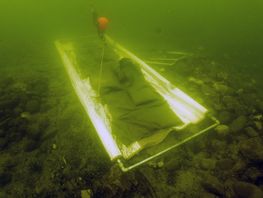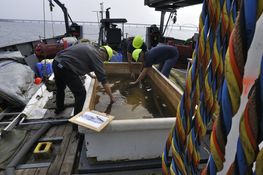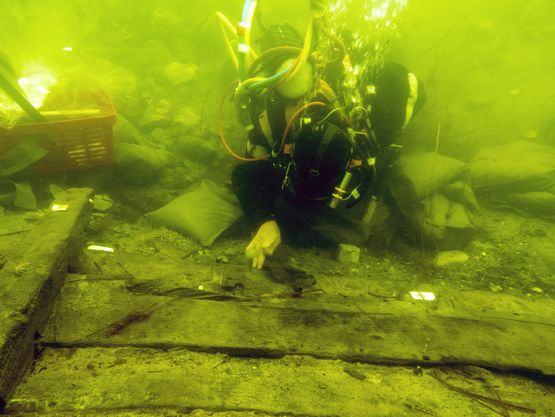
Excavation, recording and preservation in situ
Excavation
Shovels and spades can not be used underwater as sediment is whirled up from the seabed. It is possible to use small trowels, but sediment is usually simply fanned away by hand and then removed from site using a suction tube. Two types of suction tube are used. Water dredges are ideal for water depths of less than 10 m and are therefore the type most commonly used in Danish waters. Air-powered airlifts are better at greater depths.
Recording
For measuring, describing and drawing a site digital methods as well as ordinary tools - tape measures, rulers, waterproof pencils, drawing foil and sketch pads - are used. Once the site has been described, drawn and photographed, the objects are carefully lifted to the surface. Settlement finds are numbered after they have been lifted, while shipwreck finds are numbered in situ on the seabed. Items of organic material must be kept constantly wet after lifting to prevent them from drying and shrinking; other materials in order to avoid damage caused by minerals excreted from the object upon leaving the saltwater environment.
Protection without removal - in situ preservation
Shipwrecks and settlements which are not exposed to immediate threat are not usually excavated. The finds are then sometimes provided with in situ protection using tarpaulins and sandbags to preserve them for the future. Such sites must be inspected regularly to prevent damage. Preserving shipwrecks is an expensive, time-consuming process. Alternatively, ship remains can be stored in underwater depositories. The timbers are, upon documentation, stacked in a pit dug in the seabed, placed in layers separated by sand. The entire depository can be surrounded by protective sandbags and covered with tarpaulins.
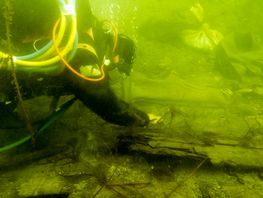
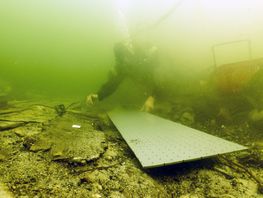
The marine archaeologist is preparing to place a ship part on the 'stretcher', which will ensure that the ship part arrives undamaged at the Viking Ship Museum, where it will be analyzed and 3D-measured.
